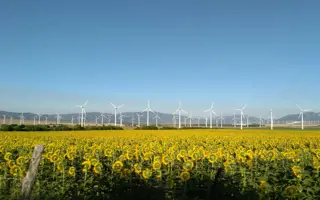
Accelerometers
Whether measuring the severity of an earthquake or movement of an airliner flying through turbulence, accelerometers have become embedded into everyday consumer products. These electromechanical devices detect forces that may be static, like the force of gravity, or, as used in many mobile devices, dynamic to sense movement or vibration.
Developed around 1927 for the US military, the first accelerometers utilised suspended carbon discs coupled to a Wheatstone bridge (a potentiometer) to detect movement. These were bulky items, weighing half a kilo, sensitive to temperature changes. Today’s accelerometers are much smaller and most commonly make use of three piezoelectric sensors orientated at 90° to each other to detect movement in three axes. Piezoelectric sensors contain microscopic crystals which generate a small voltage when stressed due to accelerative forces. These signals are amplified and interpreted by software to determine the amount and direction of acceleration, and to trigger actions such as firing a vehicle airbag in a crash.
Piezoelectric sensors contain microscopic crystals which generate a small voltage when stressed due to accelerative forces
Accelerometers can determine whether an object is moving uphill or if it will fall over if tilted. Compass or stargazing smartphone apps use signals from the triple-axis accelerometer to detect where the phone is pointing and to switch the display between portrait and landscape mode when the device is tilted. Accelerometers in laptops can also alert the hard drive when a laptop is suddenly dropped, allowing it to safely park the read/write heads to avoid them hitting the spinning disc upon impact.
From an idea by Richard Walder
***
This article has been adapted from "Accelerometers", which originally appeared in the print edition of Ingenia 62 (March 2015).
Keep up-to-date with Ingenia for free
SubscribeRelated content
Electricals & electronics

How to maximise loudspeaker quality
Ingenia asked Dr Jack Oclee-Brown, Head of Acoustics at KEF Audio, to outline the considerations that audio engineers need to make when developing high-quality speakers.

Cable fault locator
The winner of the Institute of Engineering and Technology’s 2014 Innovation Award was EA Technology’s CableSnifferTM, which uses a probe and chemical sensing technology to identify faults, saving energy companies millions of pounds each year.

High speed evolution
In December 2010, Eurostar International Ltd awarded a contract for 10 new high speed trains to Siemens. The company has used a system developed over decades to maximise the performance and passenger-carrying ability of its 320km/h trains.

Peltier devices
First discovered by Jean Charles Peltier, the Peltier effect is used across a range of devices, from thermoelectric heaters and coolers to sensors and spacecraft. Find out how the use of semiconductor materials can act to manage heat transfer.
Other content from Ingenia
Quick read

- Environment & sustainability
- Opinion
A young engineer’s perspective on the good, the bad and the ugly of COP27

- Environment & sustainability
- Issue 95
How do we pay for net zero technologies?
Quick read

- Transport
- Mechanical
- How I got here
Electrifying trains and STEMAZING outreach

- Civil & structural
- Environment & sustainability
- Issue 95